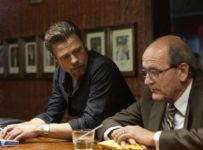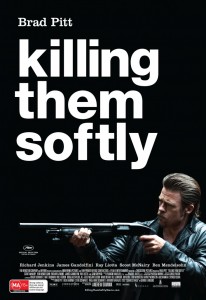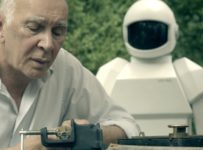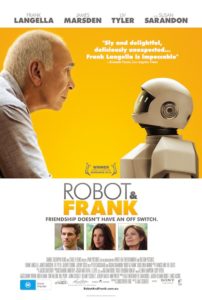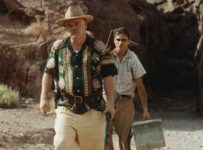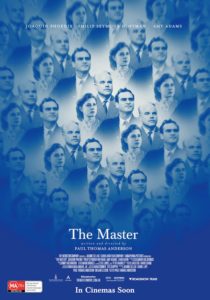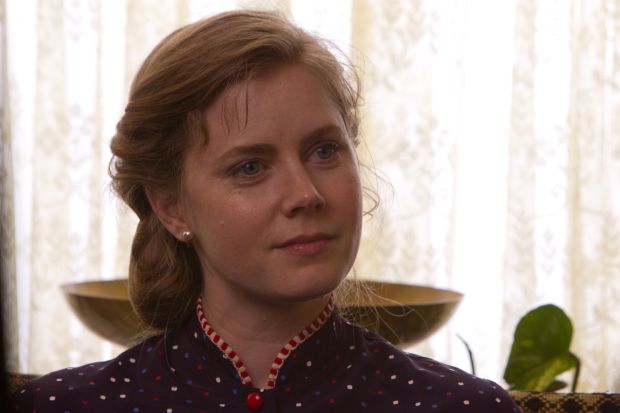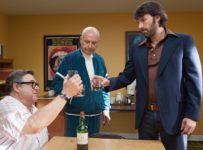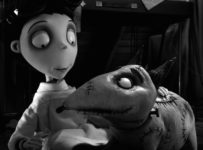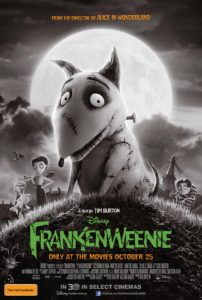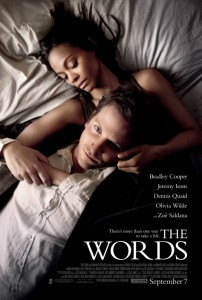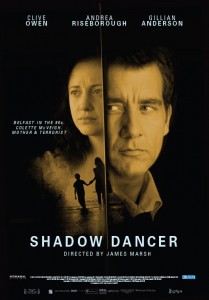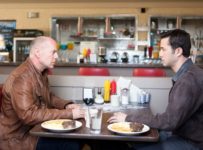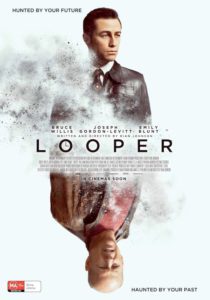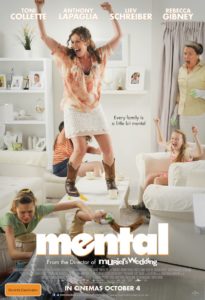Some filmmakers get in close, forcing you to cry, plead and call out for your mothers. Andrew Dominik kills us softly, from a distance.
[stextbox id=”grey” caption=”Killing Them Softly (2012)” float=”true” align=”right” width=”200″]
Director: Andrew Dominik
Writer: Andrew Dominik
Runtime: 97 minutes
Starring: Brad Pitt, Scoot McNairy, Ben Mendelsohn, Richard Jenkins, James Gandolfini, Ray Liotta, Sam Shepard, Vincent Curatola
Distributor: Hoyts
Country: US
Rating (?): Highly Recommended (★★★★)
Of all the groups impacted by the global financial crisis, organised crime has been the least represented by the media. Andrew Dominik makes amends for this in his adaptation of the 1974 George V. Higgins novel, Coogan’s Trade. Focusing on what he has referred to as a criminally unregulated business scheme run on gambling, transplanting that into an era impoverished by the same on a global scale, provides Dominik with fodder for the same dark humour that made his debut Chopper (2000) a local success. Since then, Dominik has ingratiated himself with the art houses of the world with his magnificent sophomore effort The Assassination of Jesse James By the Coward Robert Ford (2007), and it is through this often magical filter that Killing Them Softly comes to provide a unique twist on more than one genre.
Looking for a way to make some cash in these troubled economic times, Johnny Amato (Vincent Curatola) brings in two guys to help him knock over a high-stakes card game run by the mob. The twitchy Frankie (Scoot McNairy) and the far-too-laidback Australian Russell (Ben Mendelsohn) pull off the job, for which Markie Trattman (Ray Liotta) is immediately blamed, mostly because he has done it before. The mob, a dysfunctional organisation seemingly run by committee, sends spokesperson Driver (Richard Jenkins) to commission hitman Jackie Cogan (Brad Pitt) to clean up the mess. Of course, the bosses are a little squeamish when it comes to killing, forcing Cogan to go to great lengths to bring in his targets.
Shifting the setting from 1970s Boston to New Orleans circa 2008 not only changes the whole meaning of an ‘economic crisis’ for the tale, but also gives us the frightening backdrop of a post-recovery city suffering decades of financial and natural hardships. Taking its time to reveal its cool anti-hero in Brad Pitt, Dominik consciously eschews tried and true heist-drama clichés and shows a decidedly unglamorous crime lifestyle. It may have the witty dialogue and body count of its recent cousins, but the whoring and alcoholic failing hitman Mickey (a cleverly cast James Gandolfini) bursts any delusions of grandeur in a gangster’s way of life. Yet lensed by veteran Australian cinematographer Grieg Fraser, there is beauty in the violence, beaming an ethereal glow through the slow-motion collision of glass, bullets and blood as a kind of twisted ballet.
The politics are as subtle as a shotgun to the face, especially during a blatant closing monologue, that declares “America’s not a country. It’s just a business.” Yet this often cynical film is most welcome in a year of partisan bickering and decades of slick crime dramas. Dominik’s third film may not have the unsettling outrageousness of his first film, nor the Terrence Malick inspired majesty of his second, but it maintains a delicate balance of humour, drama and even pathos throughout that is rare in ‘chase’ films. Dominik continues to be one of the most interesting filmmakers working today, and let’s hope we don’t have to wait so long between this and his next picture.
Killing Them Softly was released in Australia on 11 October 2012 from Hoyts. It is released in the US on 30 November 2012.
